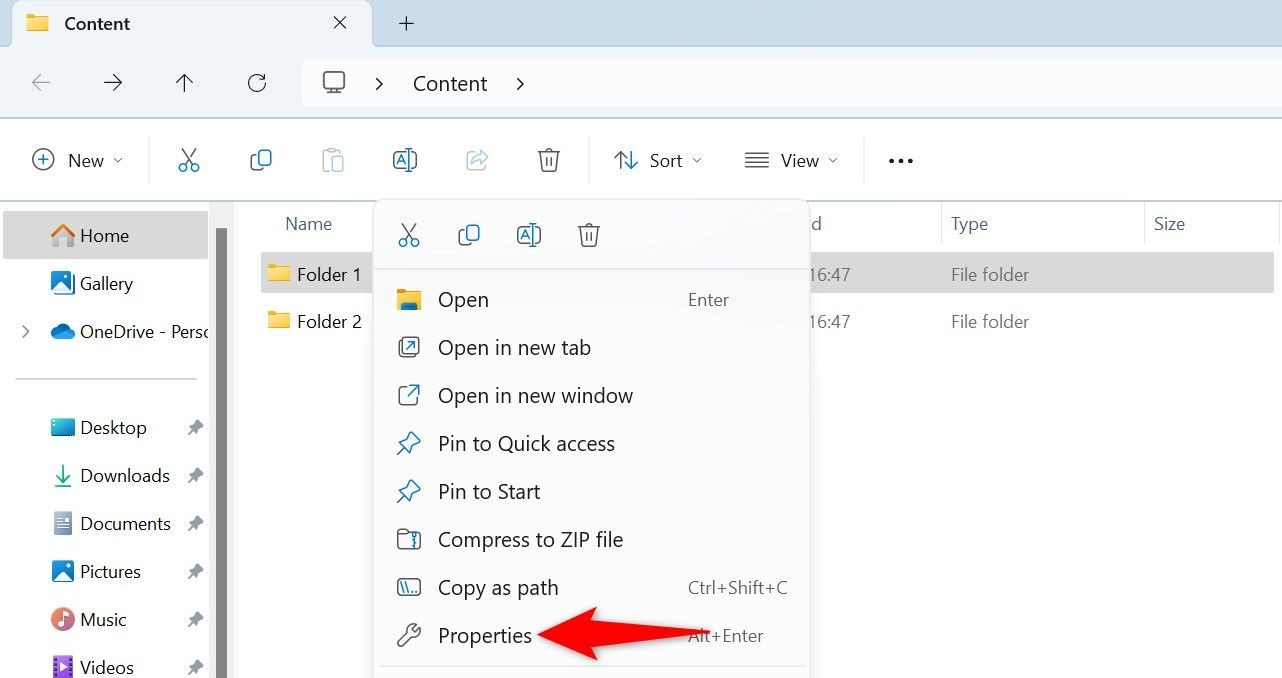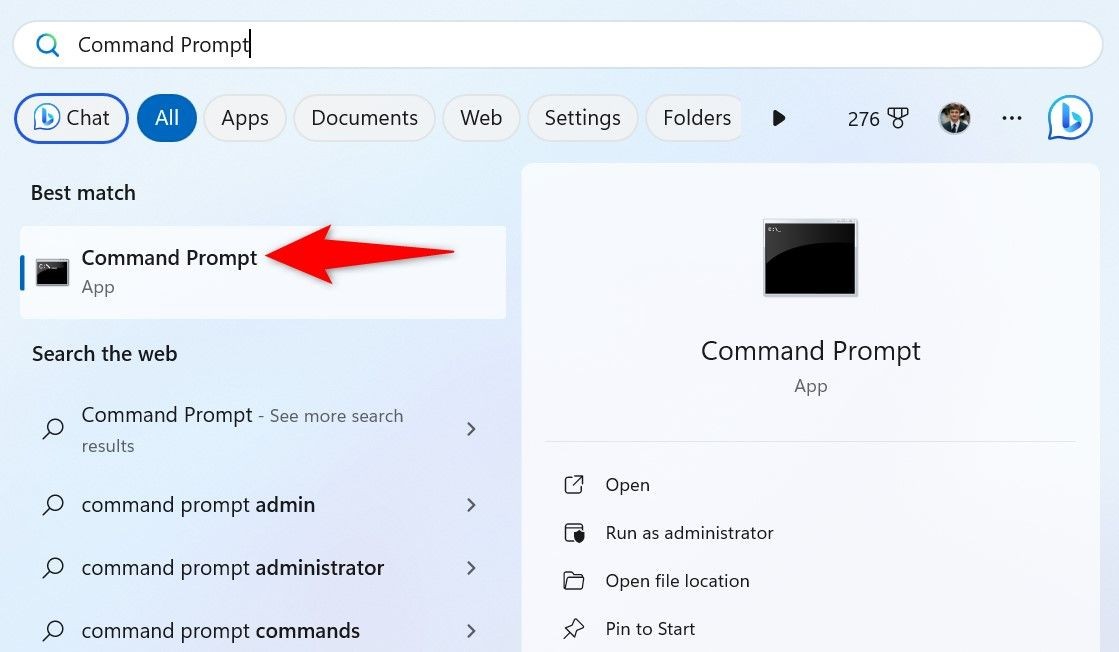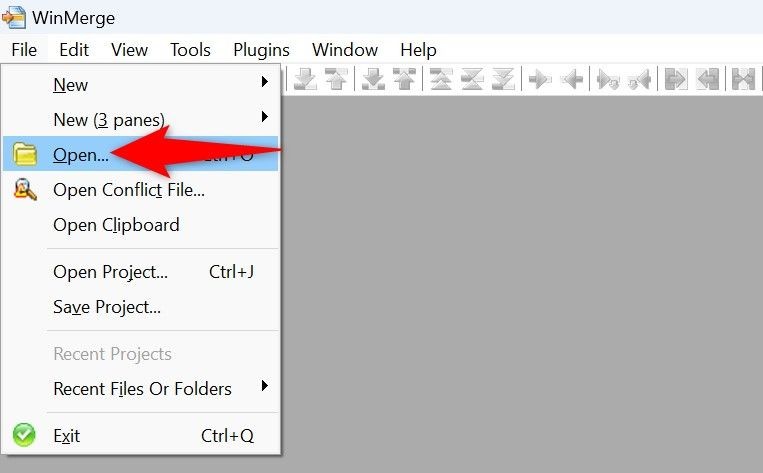Are you struggling to identify the differences between folders in Windows 11? COMPARE.EDU.VN provides a simple and effective guide to help you easily compare folders, highlighting variations in files, sizes, and dates. This comprehensive tutorial offers multiple methods, including built-in Windows features and third-party tools, to streamline your file management and ensure data accuracy. Discover how to effortlessly compare directory structures and synchronize files.
1. Understanding the Need to Compare Folders in Windows 11
Why is comparing folders important? Here’s why:
- Identifying Changes: Spotting alterations or updates made to files within folders.
- Data Verification: Ensuring consistency across different versions or backups.
- Troubleshooting: Pinpointing discrepancies that may cause software or system errors.
- Synchronization: Keeping files aligned between multiple storage locations.
- Data Migration: Validating the accuracy of transferred data.
2. Key Search Intentions for Comparing Folders
When users search for ways to compare folders, their intentions typically fall into these categories:
- Quick File Count Check: Rapidly assess the number of files/folders within directories.
- Graphical Visualization: Visually see the structural differences between two folders.
- Content & Detail Comparison: Compare the files’ contents and detailed metadata.
- Command-Line Efficiency: Use commands for fast, automated folder comparison.
- Synchronization Solutions: Find tools or methods to sync folders after comparison.
3. Method 1: Using File Explorer Properties
3.1. Accessing Folder Properties
The simplest way to get a basic comparison is by using the Properties window in File Explorer.
-
Open File Explorer: Press
Windows + E. -
Locate the First Folder: Find the first folder you want to compare, right-click it, and select “Properties.”
-
Keep the Window Open: Leave the “Properties” window open for the first folder.
-
Repeat for the Second Folder: Find the second folder, right-click, and select “Properties.”
-
Compare Side-by-Side: Place the two “Properties” windows next to each other to visually compare the details.
3.2. Analyzing the Properties Information
In the Properties window, you can see:
- Number of Files: The total count of files within the folder.
- Number of Folders: The total count of subfolders.
- Size: The amount of disk space the folder occupies.
- Created: The date when the folder was created.
- Modified: The last date when the folder’s contents were modified.
- Accessed: The last date when the folder was accessed.
By comparing these details, you can quickly identify differences.
3.3. Limitations of File Explorer Properties
While this method is quick, it has limitations:
- Manual Comparison: Requires manually comparing the details.
- No Content Comparison: Does not compare the contents of the files within the folders.
- Basic Overview: Only provides a basic overview without detailed differences.
4. Method 2: Using Command Prompt with Robocopy
4.1. Understanding Robocopy
Robocopy (Robust File Copy) is a command-line directory replication command. While primarily used for copying files, it can also show differences between folders without copying anything.
4.2. Opening Command Prompt
-
Open Start Menu: Click the Start button or press the Windows key.
-
Type “Command Prompt”: Search for “Command Prompt” in the Start Menu.
-
Launch Command Prompt: Click on “Command Prompt” to open the application.
4.3. Executing the Robocopy Command
Type the following command in Command Prompt, replacing "Folder1" with the path to the first folder and "Folder2" with the path to the second folder:
robocopy "Folder1" "Folder2" /L /NJH /NJS /NP /NSTo easily copy a folder’s full path with double quotes:
- Hold down the
Shiftkey. - Right-click the folder.
- Choose “Copy as Path.”
4.4. Interpreting Robocopy Output
The Robocopy command will output a list of differences between the folders. This includes:
- Files only in the first folder.
- Files only in the second folder.
- Different file sizes.
- Different modification dates.
Robocopy does not copy any files due to the /L flag, which only lists the differences.
4.5. Robocopy Command Flags Explained
- /L: List only (no copying).
- /NJH: No Junctions, Hard links, and Reparse points. Focuses on regular files.
- /NJS: No Symbolic links.
- /NP: No Progress.
- /NS: No Security information.
These flags ensure that Robocopy provides a clean comparison of regular files in the specified folders.
5. Method 3: Using WinMerge (Third-Party Tool)
5.1. Introduction to WinMerge
WinMerge is an open-source differencing and merging tool for Windows. It can compare both folders and files, presenting the differences in a visual format.
5.2. Downloading and Installing WinMerge
- Open a Web Browser: Launch your preferred web browser (e.g., Chrome, Firefox).
- Go to the WinMerge Website: Navigate to WinMerge Downloads.
- Download the Executable: Download the executable (
.exe) version of WinMerge. Avoid the ZIP version for ease of installation. - Install WinMerge: Run the downloaded installer and follow the on-screen instructions.
5.3. Configuring WinMerge for Folder Comparison
-
Open WinMerge: Launch the WinMerge application.
-
Open the Comparison Dialog: Select
File > Openor pressCtrl + O. -
Select the First Folder: Click “Browse” for the “1st File or Folder” field and choose the first folder.
Alt text: The browse button next to the “1st File or Folder” field in WinMerge.
-
Select the Second Folder: Click “Browse” for the “2nd File or Folder” field and choose the second folder.
-
Enable Read-Only: Check the “Read-Only” option for both folders. This prevents accidental changes.
-
Set Folder Filter: Ensure the “Folder: Filter” field is set to
*.*. If not, type it in. This ensures all files are compared. -
Start Comparison: Click “Compare” at the bottom of the dialog.
5.4. Analyzing the WinMerge Comparison Results
WinMerge will display a detailed comparison of the folders, showing:
-
Identical Files: Files that are the same in both folders.
-
Left Only: Files present only in the first folder.
-
Right Only: Files present only in the second folder.
-
Different Files: Files with the same name but different content.
6. Choosing the Right Method
- File Explorer Properties: Use this for a quick, basic overview of folder attributes.
- Command Prompt (Robocopy): Use this for a fast, command-line-based comparison.
- WinMerge: Use this for a detailed, visual comparison of folders and files.
7. Additional Tips for Folder Comparison
- Backup Before Comparison: Always back up your data before performing any comparison or synchronization operations.
- Use Filters: Employ filters in tools like WinMerge to focus on specific file types or attributes.
- Verify Results: Double-check the results of the comparison to ensure accuracy.
- Synchronization Tools: After comparing, consider using synchronization tools to keep folders aligned.
8. Practical Applications of Folder Comparison
- Software Development: Comparing different versions of code folders.
- Document Management: Ensuring consistency across document repositories.
- System Administration: Verifying the integrity of system files.
- Backup Verification: Confirming that backups contain the correct files.
- Content Creation: Managing and comparing different versions of media files.
9. Addressing Common Folder Comparison Challenges
- Large Folder Sizes: For very large folders, consider using command-line tools for better performance.
- Complex Folder Structures: Use visual tools like WinMerge to navigate and understand complex structures.
- File Permissions: Ensure you have the necessary permissions to access and compare files.
- Hidden Files: Configure your comparison tool to show hidden files for a complete analysis.
10. Advanced Techniques for Folder Comparison
10.1. Using PowerShell for Folder Comparison
PowerShell provides a robust alternative to Command Prompt for comparing folders. Here’s how you can use it:
- Open PowerShell: Search for “PowerShell” in the Start Menu and open it.
- Use the
Compare-ObjectCmdlet: This cmdlet compares two sets of objects, which can be files in two different folders.
$Folder1 = Get-ChildItem -Path "C:PathToFolder1" -Recurse
$Folder2 = Get-ChildItem -Path "C:PathToFolder2" -Recurse
Compare-Object -ReferenceObject $Folder1 -DifferenceObject $Folder2 -Property Name, Length, LastWriteTimeThis script retrieves all files and subfolders recursively from both folders and compares them based on name, length, and last write time.
10.2. Automating Folder Comparison with Scripts
For repetitive tasks, you can create scripts to automate folder comparisons:
- Create a Batch Script: Use a text editor to create a
.batfile with Robocopy commands. - Schedule the Script: Use Task Scheduler to run the script at specific times.
Here’s an example of a batch script:
@echo off
echo Comparing folders...
robocopy "C:Folder1" "C:Folder2" /L /NJH /NJS /NP /NS
echo Comparison complete.
pause10.3. Integrating Folder Comparison into Backup Strategies
Include folder comparison as part of your backup verification process:
- Post-Backup Comparison: After creating a backup, compare the source folder with the backup folder to ensure completeness and accuracy.
- Scheduled Comparisons: Schedule regular comparisons to detect any discrepancies over time.
11. Understanding File Attributes and Metadata
11.1. Importance of File Attributes
File attributes provide essential information about files:
- Read-Only: Indicates if a file can be modified.
- Hidden: Indicates if a file is visible in standard file listings.
- Archive: Indicates if a file has been backed up.
- System: Indicates if a file is a system file.
Comparing these attributes can help identify differences beyond just file content.
11.2. Analyzing File Metadata
Metadata provides additional information about files:
- Author: The creator of the file.
- Date Created: The date the file was created.
- Date Modified: The last date the file was modified.
- File Size: The size of the file in bytes.
- File Type: The file extension (e.g., .txt, .docx, .jpg).
Tools like WinMerge and PowerShell can compare metadata to pinpoint subtle differences.
12. Best Practices for Handling Large Folders
12.1. Breaking Down Comparisons
For extremely large folders, break the comparison into smaller, manageable chunks:
- Compare Subfolders: Compare subfolders individually rather than the entire parent folder at once.
- Use Date Ranges: Compare files modified within specific date ranges to focus on recent changes.
12.2. Optimizing Tool Settings
Optimize the settings of your comparison tool for large folders:
- Increase Memory Allocation: Allocate more memory to the tool for faster processing.
- Disable Unnecessary Features: Disable features like visual previews to reduce resource usage.
12.3. Using Solid-State Drives (SSDs)
Using SSDs can significantly improve the performance of folder comparisons due to their faster read and write speeds.
13. Folder Comparison on Network Drives
13.1. Addressing Network Latency
When comparing folders on network drives, network latency can impact performance:
- Minimize Network Traffic: Avoid running other network-intensive tasks during the comparison.
- Use Local Copies: If possible, create local copies of the folders for faster comparison.
13.2. Handling Permissions
Ensure you have the necessary permissions to access and compare files on network drives:
- Verify Credentials: Double-check your network credentials to ensure you have the appropriate access rights.
- Run as Administrator: Run your comparison tool as an administrator to bypass potential permission issues.
13.3. Using Network-Optimized Tools
Some tools are specifically designed for comparing folders on network drives, offering features like:
- Parallel Processing: Comparing multiple files simultaneously to maximize network bandwidth.
- Incremental Comparison: Only comparing files that have changed since the last comparison.
14. Using Cloud Storage for Folder Comparison
14.1. Cloud Storage Comparison Tools
Cloud storage services often provide built-in tools for comparing folders:
- Dropbox: Dropbox offers version history and file comparison features.
- Google Drive: Google Drive allows you to compare versions of documents and files.
- OneDrive: OneDrive integrates with Windows File Explorer, making it easy to compare folders.
14.2. Third-Party Cloud Comparison Tools
Several third-party tools specialize in comparing folders across different cloud storage services:
- CloudCompare: Compares files across multiple cloud platforms.
- MultCloud: Manages and compares files in various cloud storage accounts.
14.3. Security Considerations
When using cloud storage for folder comparison, consider security:
- Encryption: Ensure your data is encrypted both in transit and at rest.
- Access Control: Use strong passwords and multi-factor authentication to protect your accounts.
- Permissions: Regularly review and update file and folder permissions.
15. Automating Folder Synchronization
15.1. Using Robocopy for Synchronization
Robocopy can also be used to synchronize folders:
robocopy "C:Folder1" "C:Folder2" /MIR /NP /NS /NDL /NFL- /MIR: Mirrors a directory tree, deleting files in the destination that are not present in the source.
- /NP: No Progress – suppresses the display of percentage completion.
- /NS: No Size – doesn’t log file sizes.
- /NDL: No Directory Log – doesn’t log directory names.
- /NFL: No File Log – doesn’t log file names.
15.2. Using Third-Party Synchronization Tools
Several third-party tools offer advanced synchronization features:
- FreeFileSync: A free open-source file synchronization tool.
- GoodSync: A commercial tool with real-time synchronization and backup capabilities.
- Syncthing: A decentralized, open-source synchronization tool.
15.3. Scheduling Synchronization Tasks
Automate synchronization tasks using Task Scheduler:
- Create a Task: Open Task Scheduler and create a new task.
- Set Triggers: Define triggers based on time, events, or other criteria.
- Define Actions: Specify the synchronization command or script to run.
16. Advanced WinMerge Features
16.1. File Content Comparison
WinMerge can compare the content of individual files:
- Double-Click Files: Double-click a file in the folder comparison window to open the file comparison view.
- View Differences: WinMerge will highlight the differences between the two files.
16.2. Three-Way Comparison
WinMerge supports three-way comparison, which is useful for merging changes from multiple sources:
- Open Three-Way Comparison: Select
File > Openand choose three folders or files. - Merge Changes: WinMerge will display the differences and allow you to merge changes from different sources.
16.3. Customizing WinMerge
Customize WinMerge to suit your needs:
- Change Settings: Adjust settings like font size, colors, and comparison algorithms in the Options dialog.
- Install Plugins: Extend WinMerge’s functionality with plugins.
17. Troubleshooting Common Issues
17.1. Slow Comparison Speed
If folder comparison is slow:
- Close Unnecessary Applications: Close other applications to free up system resources.
- Defragment Hard Drive: Defragment your hard drive to improve file access speed.
- Upgrade Hardware: Consider upgrading your hardware, such as adding more RAM or switching to an SSD.
17.2. Incorrect Comparison Results
If you get incorrect comparison results:
- Verify Settings: Double-check the settings of your comparison tool to ensure they are correct.
- Check File Permissions: Ensure you have the necessary permissions to access and compare files.
- Update Software: Update your comparison tool to the latest version to fix potential bugs.
17.3. Tool Crashes
If your comparison tool crashes:
- Restart Tool: Restart the tool and try again.
- Reinstall Tool: Reinstall the tool to fix potential installation issues.
- Contact Support: Contact the tool’s support team for assistance.
18. Using Third-Party Folder Comparison Tools: A Detailed Look
18.1. Overview of Popular Tools
Here’s an overview of some popular third-party folder comparison tools:
- Beyond Compare: A commercial tool known for its powerful features and user-friendly interface.
- Araxis Merge: A professional tool designed for software developers and technical users.
- Total Commander: A file manager with built-in folder comparison and synchronization capabilities.
- DirSync Pro: A free tool focused on folder synchronization.
18.2. Key Features to Look For
When choosing a third-party folder comparison tool, look for these key features:
- Visual Comparison: A clear visual display of differences between folders and files.
- File Content Comparison: The ability to compare the content of individual files.
- Synchronization: Tools for synchronizing folders after comparison.
- Automation: Scripting and automation capabilities.
- Filtering: The ability to filter files based on various criteria.
- Reporting: The ability to generate reports of comparison results.
- Integration: Integration with other tools and services.
18.3. Comparing Different Tools
Here’s a comparison of different folder comparison tools:
| Feature | WinMerge | Beyond Compare | Araxis Merge | Total Commander |
|---|---|---|---|---|
| Price | Free | Commercial | Commercial | Commercial |
| Visual Comparison | Good | Excellent | Excellent | Good |
| Content Comparison | Yes | Yes | Yes | Yes |
| Synchronization | No | Yes | Yes | Yes |
| Automation | Limited | Yes | Yes | Yes |
| Filtering | Yes | Yes | Yes | Yes |
| Reporting | Basic | Advanced | Advanced | Basic |
| Integration | Limited | Good | Good | Good |
| User Interface | Simple | User-Friendly | Technical | Functional |





19. Future Trends in Folder Comparison
19.1. AI-Powered Comparison
AI and machine learning are starting to play a role in folder comparison:
- Intelligent Filtering: AI can automatically filter out irrelevant files based on content analysis.
- Smart Merging: AI can assist in merging changes from different sources by identifying conflicts and suggesting resolutions.
19.2. Real-Time Comparison
Real-time folder comparison is becoming more common:
- Continuous Monitoring: Tools can continuously monitor folders for changes and provide instant notifications.
- Automatic Synchronization: Changes can be automatically synchronized in real-time.
19.3. Enhanced Cloud Integration
Cloud integration is becoming more seamless:
- Direct Comparison: Tools can directly compare folders across different cloud storage services.
- Cloud-Based Collaboration: Teams can collaborate on folder comparison and synchronization in the cloud.
20. Conclusion: Achieving Efficient Folder Comparison in Windows 11
Effectively comparing folders in Windows 11 involves understanding the available tools and methods, from the basic File Explorer Properties to advanced third-party applications like WinMerge. Whether you need a quick overview, a detailed file comparison, or automated synchronization, choosing the right approach can significantly streamline your file management tasks. Always back up your data and verify results to ensure accuracy.
Need more in-depth comparisons and assistance with decision-making? Visit COMPARE.EDU.VN for comprehensive guides and expert insights. Simplify your choices and make informed decisions today.
For further assistance, contact us:
- Address: 333 Comparison Plaza, Choice City, CA 90210, United States
- WhatsApp: +1 (626) 555-9090
- Website: compare.edu.vn
FAQ: Comparing Folders in Windows 11
Q1: What is the quickest way to compare two folders in Windows 11?
A: The quickest way is to use File Explorer Properties. Right-click each folder, select “Properties,” and compare the file counts, sizes, and dates side-by-side.
Q2: Can I compare folder contents using Command Prompt?
A: Yes, you can use the Robocopy command with the /L flag to list the differences between folders without copying files.
Q3: What is WinMerge, and how does it help in comparing folders?
A: WinMerge is a free, open-source tool that provides a visual comparison of folders and files, highlighting differences in content and structure.
Q4: How do I download and install WinMerge?
A: Download the executable version from the WinMerge website, run the installer, and follow the on-screen instructions.
Q5: What do the different colors mean in WinMerge’s comparison results?
A: Different colors indicate different statuses: identical files, files only in the left folder, files only in the right folder, and different files.
Q6: Can I compare files within folders using WinMerge?
A: Yes, double-click a file in the folder comparison view to open the file comparison view and see the content differences.
Q7: How can I automate folder comparison in Windows 11?
A: Use PowerShell scripts or batch scripts with Robocopy and schedule them to run automatically using Task Scheduler.
Q8: What are the best practices for comparing large folders?
A: Break down comparisons into smaller chunks, optimize tool settings, and use SSDs for faster performance.
Q9: How do I compare folders on network drives?
A: Minimize network traffic, verify permissions, and use network-optimized tools.
Q10: Are there any cloud-based folder comparison tools available?
A: Yes, cloud storage services like Dropbox, Google Drive, and OneDrive have built-in comparison features, and third-party tools like CloudCompare and MultCloud are also available.
